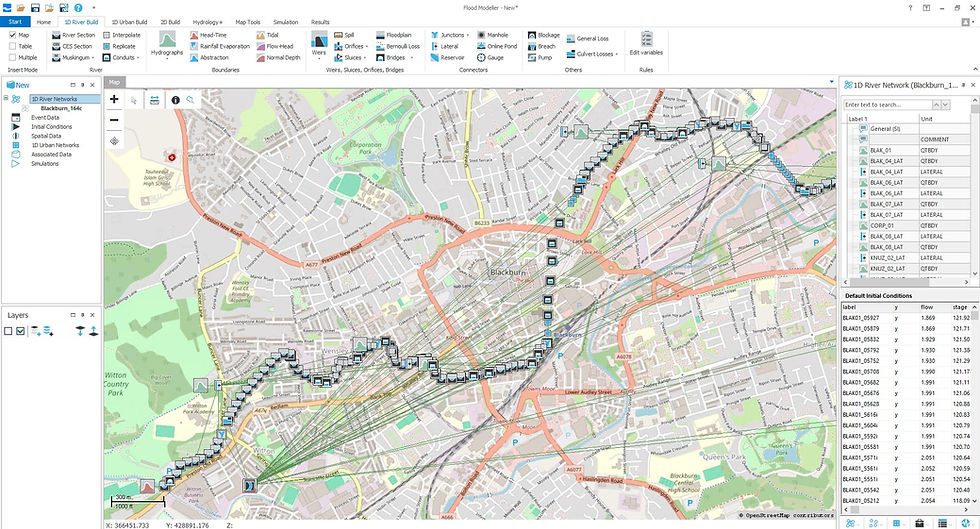Defining Flood Risk with Confidence: How Flood Modeller Is Transforming Flood Risk Assessments
- oliverashton3
- Jul 24, 2025
- 3 min read
Updated: Oct 6, 2025
Helena Du-Roe, Principal Hydrologist at Enzygo
Flood risk is a critical consideration in the planning and development process, with flood extents being a major constraint to a developable area usable on a Site. With increasing climate variability and evolving policy requirements, planners and consultants need reliable and relevant tools to assess and mitigate flood risk early from the onset of a project. Flood Modeller, developed by Jacobs, is helping reshape how straightforward it is to derive the flood risk to a Site. Modelled outputs are being delivered with an increased level of clarity and, in turn, adding confidence to the flood risk data included within Flood Risk Assessments (FRAs).
At Enzygo, we have substantial experience in the delivery of all types of built developments, including major infrastructure projects, residential housing schemes and renewable energy programmes, across a broad range of environmental disciplines, including Planning, Hydrology and Drainage, Permitting and Regulation, Landscape, Ecology, Transport, Geoenvironmental, Noise and Vibration, Air Quality and Arboriculture.

Supporting Planning with Integrated Hydrology and Hydraulic Modelling
Flood Modeller’s interface and programming allows us to undertake both hydrological and hydraulic modelling within a single software, whether that be for a new build model or an existing model re-run.
The addition of Hydrology+, an add-on module within Flood Modeller, helps us to streamline the process of generating inflow data for hydraulic models. It can automate catchment delineation, complete peak flow estimation using ReFH2 and FEH methods by accessing the National River Flow Archive dataset. Hydrology+ also facilitates the production of flow hydrographs across multiple return periods and climate change scenarios, assisting in creating a simpler model setup process.
The automated reporting feature allows for collation of hydrological inputs in a format following the latest UK regulator standards, assisting in reducing the risk of errors during the review process.
Delivering Regulator Ready Flood Risk Assessments
Flood Modeller has allowed us to generate detailed outputs of flood extents from fluvial, tidal, and surface water sources. These results serve as robust inputs for FRAs that comply with the standards set by the Environment Agency and Lead Local Flood Authorities.
Its scenario based modelling capabilities allows us to assess:
Flood extents and depths for a range of return periods.
Impacts of proposed mitigation measures.
The impact of climate change allowances and breach scenarios.
Flood Modeller makes analysing results straightforward. Its interface and built-in tools allow us to seamlessly review outputs, identify flood extents, and assess impacts across a site. The resulting outputs help us guide clients toward the most appropriate and developable areas within their site.

Real-World Impact: Supporting Sustainable Development
At consultancies like Enzygo, Flood Modeller plays a central role in evaluating flood risk across strategic land, infrastructure, leisure, and renewable energy projects. The integration of Hydrology+ to Flood Modeller has enhanced our ability to screen sites, identify constraints, and deliver robust assessments that inform planning from the outset.
Looking Ahead
As planning policy continues to evolve and climate change introduces new challenges, tools like Flood Modeller will be essential in helping us adapt and respond. Its integrated capabilities, streamlined workflows, and regulator aligned outputs make it a key piece of software to integrate into the daily workflow.
Helena Du-Roe
Helena is a Principal Hydrologist at Enzygo with over eight years of experience in the water and environmental management sector.
She specialises in applying hydraulic modelling to assess fluvial, tidal, and pluvial flood risks, providing technical insight to support flood mitigation strategies and planning proposals.








